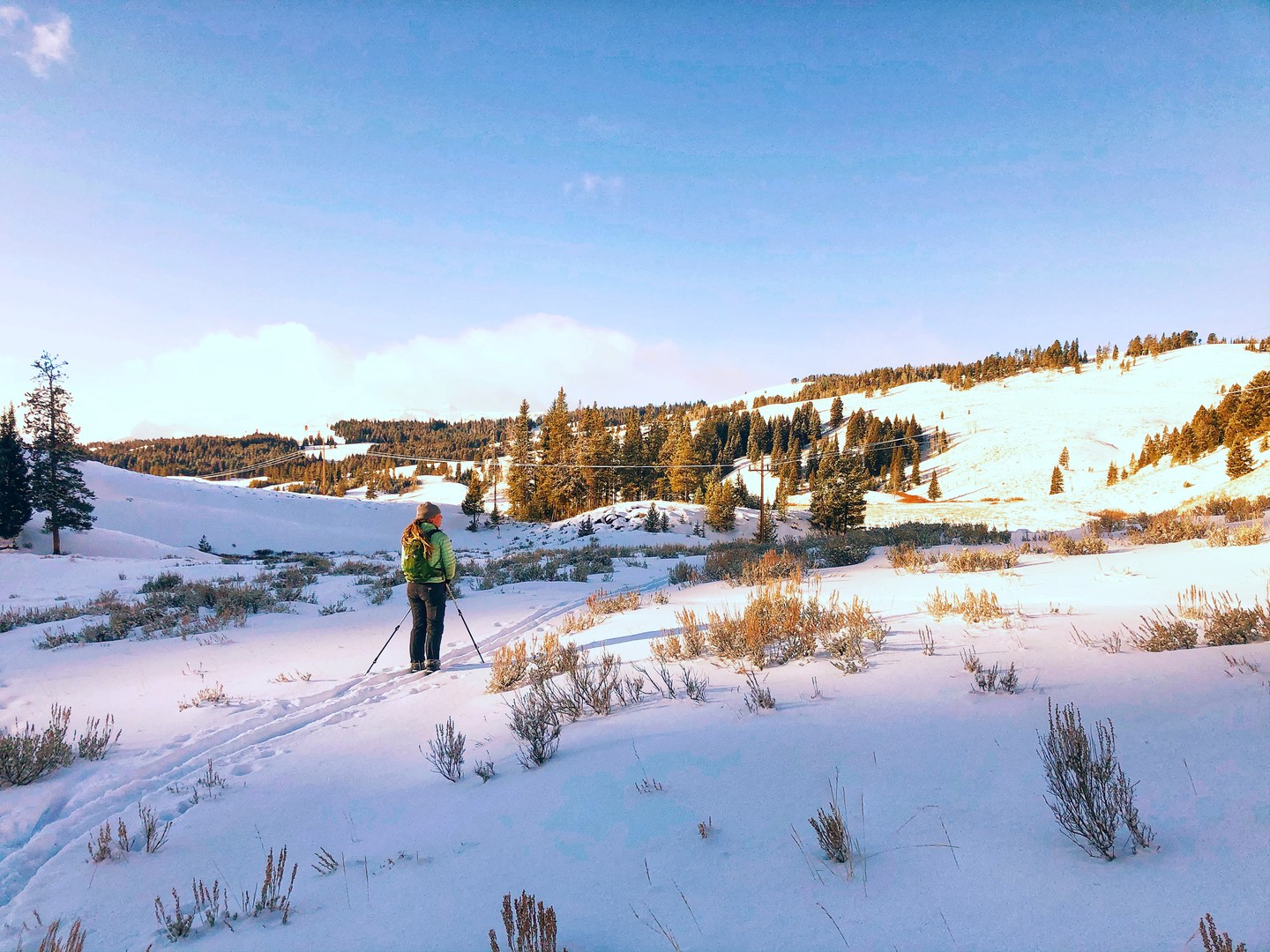You are here
Snow Pass is one of Yellowstone’s premier backcountry cross country ski trails. Despite its easy access, close proximity to the northern entrance, and stunning views, it’s not terribly popular due to the more difficult nature of the terrain. By Yellowstone ski ratings, this trail ranges from “Easiest” to “Most Difficult.”
However, even novice skiers with just a little confidence shouldn't hesitate in giving it a try. The “Most Difficult” section is a short, half-mile long steep stint ascent up to Snow Pass itself. The terrain isn’t dangerous; just difficult to navigate on skis, so worse comes to worst, one can just take off skis and hike the hill.
The cross-country ski loop begins at the parking area for the Upper Terrace of Mammoth Hot Springs, the farthest one can drive south in the winter before encountering a closed road gate. Access Snow Pass via the groomed Mammoth Hot Springs loop. Ski left as you enter the loop and immediately start climbing up a gradual hill perfect for warming up. After about half a mile, you’ll see an obvious split, with the groomed trail continue right and an ungroomed, signed trail splintering into the woods to your left.
This is not the Snow Pass Trail itself, but rather a short connector trail that brings you to the signed junction of Snow Pass (right) and the Howard Eaton-Mammoth-Golden Gate Trail (left).
Here is where the difficulty picks up, beginning where you will climb 700 feet in 1.5 miles. As you start heading up into the trees along a narrow track, some side-hilling and/or duck-walking may be necessary here.
You get a brief reprieve at the top of this section before reaching the most difficult part of the trail, which goes relentlessly uphill for the last 600 meters. You may find it easier to remove your skis here and walk this section. Just be sure to stay to the side so as to not create more difficult terrain for other skiers that may follow you.
After 2 miles of skiing (though it will feel like more!), you’ll reach the top of Snow Pass.
Start descending down into a low lying glen frequented by elk and bison thanks to the thermal features in the creek that keep the ground warmer here. You’ll encounter the steepest downward hill in this section, but it’s nothing to be frightened of.
After carefully crossing Glen Creek at the bottom, you’ll find yourself entering a wide open valley. Just ahead, you should be able to see the signpost marking an intersection between several trails. You will be continuing on the leftmost Fawn Pass Trail, which takes you counter-clockwise around Terrace Mountain.
From this point on, the terrain is almost entirely flat. Any difficulty will come from breaking ground if no skiers have come before you. If you don’t have the grace of following ski tracks, look for the brown trail markers to guide your way. When in doubt, continue skirting the left hill. Careful not to stray too far right or you might find yourself falling through into Glen Creek.
After about 2.5 miles on the Fawn Pass Trail, you’ll come to a signpost junction and you have a choice to make. You can opt to go back to the parking either along the road (closed to all vehicles except park service shuttles to the Indian Creek ski area) or along the Howard Eaton-Mammoth-Golden Gate Trail. The latter is the more difficult option as even fewer people ski this so route finding is necessary. Based on the topographic maps, it seems as though a lot of steep side-hilling is involved, especially as it goes through the Hoodoos. Don’t take this trail unless you are confident in your ski skills.
While the easier of the two options, the road presents its own struggles. As it passes through the road high point of Golden Gate, the road is very icy and windy, meaning it’s scattered with wood chips and gravel. Great for the shuttles, less great for skiers. We ended up taking off our skis once again for a short stint to avoid ruining the bottom. You should only have to do this for a couple of hundred meters.
After this series of curves, the road gets significantly better with no more wood chips. It also starts going consistently downhill enough to just glide back to your car, merciful after skiing nearly 10 miles! If you still have energy, feel free to tack on the full Mammoth Terrace loop to cool down.
Logistics + Planning
Current Weather: Powered by Dark Sky
























Comments
Sign In and share them.